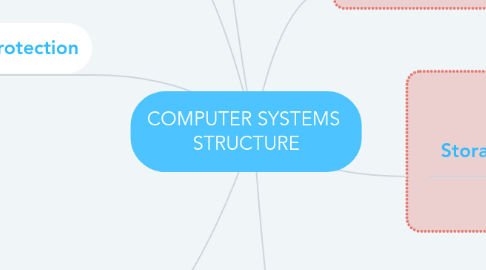
1. Dual Mode Operation
1.1. User Mode
1.1.1. user program executes in user mode.
1.1.2. certain areas of memory are protected from user access.
1.1.3. certain instructions may not be executed .
1.2. Kernel Mode
1.2.1. monitor executes in kernel mode.
1.2.2. privileged instructions may be executed .
1.2.3. protected areas of memory may be accessed.
2. Memory Protection
2.1. computer system must provide memory protection at least for interrupt vector and interrupt service routines.
2.2. Base register-holds smallest legal physical memory address.
2.3. Limit register-size of the range.
2.4. Memory outside the defined range is protected.
3. CPU Protection
3.1. Timer
3.1.1. 1) every time the clock ticks,the counter is decremented.
3.1.2. 2) when timer reaches the value 0, an interrupt occurs.
3.1.3. 3) when timer interrupts, control transfers to the OS.
3.1.4. 4) load timer is a privileged instruction.
4. Only one process can run at the same time.
5. Synchronous I/O Structure
6. Asynchronous I/O Structure
7. Can run multiple process at the same time.
8. Storage Structure
8.1. Main memory
8.1.1. volatile storage device that loses its contents when power is turn off.
8.2. Secondary storage
8.2.1. it is capable to hold large quantities of data permanently.
9. Storage Hierarchy
9.1. Storage systems
9.1.1. organized in hierarchy is speed, cost,volatility.
9.2. Caching
9.2.1. -copying information into faster storage system -main memory can be viewed as a last cache for secondary storage.

